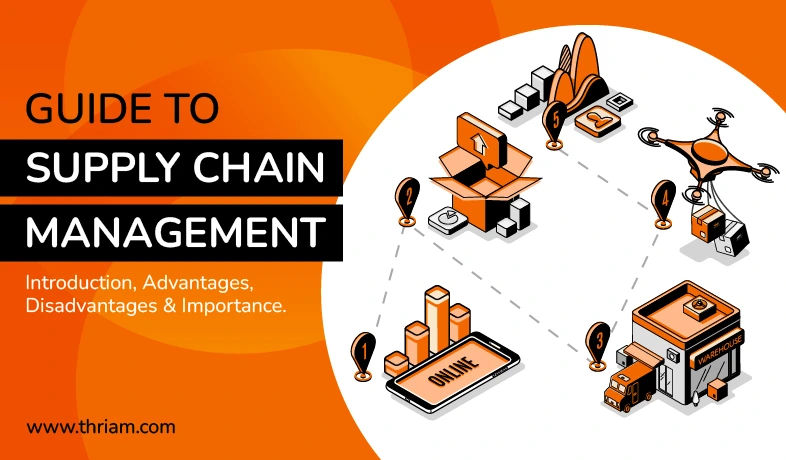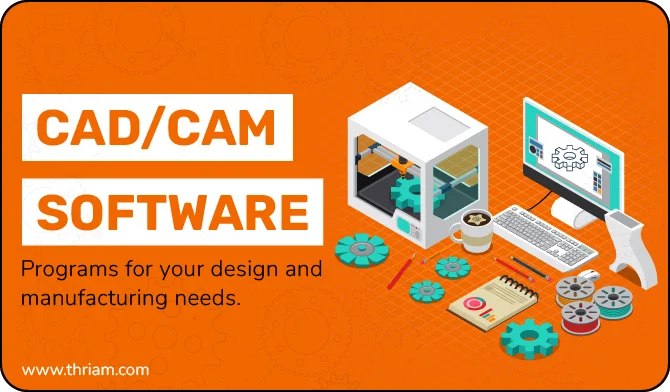Understanding Lean Manufacturing: Streamlining Operations for Greater Efficiency and Quality
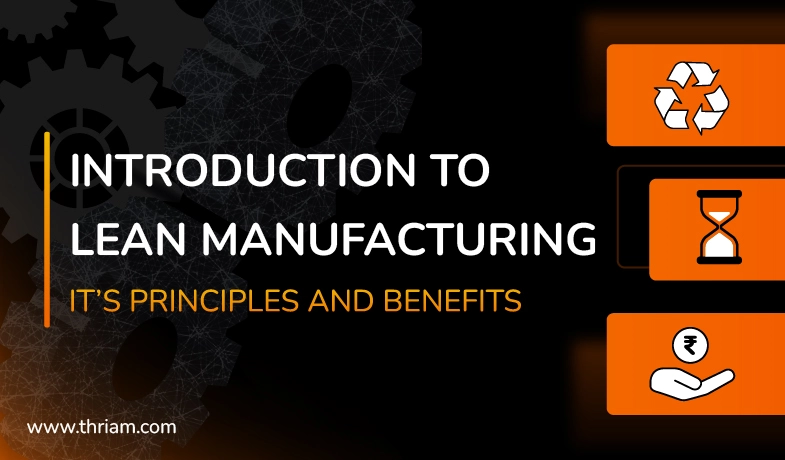
Introduction:
In today's highly competitive business environment, organizations constantly seek innovative ways to optimize their operations, reduce costs, and improve customer satisfaction. One such methodology that has gained significant traction is lean manufacturing. This blog aims to provide a comprehensive understanding of lean manufacturing, its key principles, benefits, and real-life examples of successful implementation.
What is Lean Manufacturing?
At its core, lean manufacturing is a systematic approach to eliminate waste and streamline processes to improve efficiency, productivity, and quality. Originating from the Toyota Production System (TPS), lean manufacturing focuses on identifying and eliminating non-value-added activities, known as "waste," throughout the entire value stream.
Key Principles of Lean Manufacturing:
- Value: The first principle of lean manufacturing is to identify value from the customer's perspective. It involves understanding what customers truly consider valuable and aligning production activities to meet those needs.
- Value Stream Mapping: Once value is identified, the next step is to map the value stream. This process involves thoroughly analyzing the flow of materials, information, and activities from the beginning to the end of the production process. By identifying bottlenecks and waste, organizations can create a more efficient and streamlined workflow.
- Flow: Creating a smooth and uninterrupted flow is critical to lean manufacturing. Flow ensures that work moves seamlessly from one process to another without delays, interruptions, or excess inventories. By eliminating disruptions and minimizing waiting times, organizations can enhance productivity and reduce lead times.
- Pull-Based Systems: Lean manufacturing emphasizes the use of pull-based systems rather than push-based systems. This means that production is driven by customer demand, ensuring that products are only produced when there is a specific customer order. Pull systems reduce inventory levels, prevent overproduction, and enable organizations to be more responsive to changing customer needs.
- Continuous Improvement: The final principle of lean manufacturing is continuous improvement. It involves a relentless pursuit of identifying and eliminating waste, as well as constantly seeking ways to improve processes, products, and overall performance. Through ongoing evaluation, organizations can drive innovation, enhance efficiency, and stay ahead of the competition.
Step-by-step process of lean manufacturing
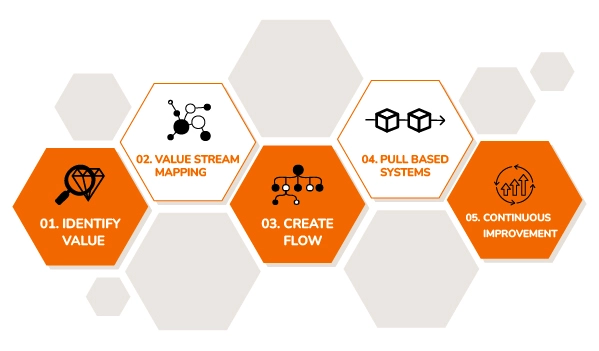
- Identify Value: The first step in lean manufacturing is identifying value from the customer's perspective. This involves understanding what customers consider valuable and aligning production activities to meet those needs.
- Map the Value Stream: Once value is identified, the next step is to map the value stream. Value stream mapping is a process of analyzing the flow of materials, information, and activities from the beginning to the end of the production process. This process helps identify bottlenecks and waste throughout the entire value stream.
- Create Flow: Creating a smooth and uninterrupted flow is critical to lean manufacturing. Flow ensures that work moves seamlessly from one process to another without delays, interruptions, or excess inventories. By eliminating disruptions and minimizing waiting times, organizations can enhance productivity and reduce lead times.
- Implement Pull-Based Systems: Lean manufacturing emphasizes the use of pull-based systems rather than push-based systems. This means that production is driven by customer demand, ensuring that products are only produced when there is a specific customer order. Pull systems reduce inventory levels, prevent overproduction, and enable organizations to be more responsive to changing customer needs.
- Pursue Perfection through Continuous Improvement: The final step of lean manufacturing is pursuing perfection through continuous improvement. It involves a relentless pursuit of identifying and eliminating waste, as well as constantly seeking ways to improve processes, products, and overall performance. Through ongoing evaluation, organizations can drive innovation, enhance efficiency, and stay ahead of the competition.
Additional steps that help facilitate lean manufacturing include:
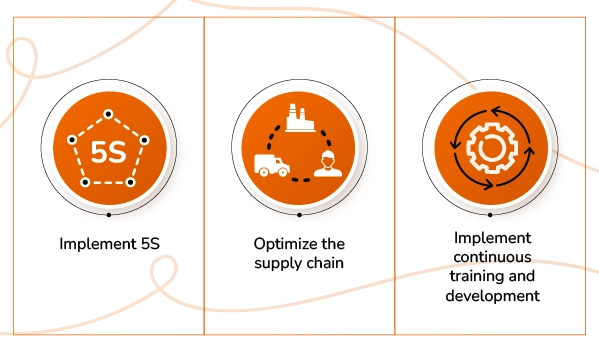
- Implement 5S: Implementing the 5S methodology of Sort, Set in Order, Shine, Standardize, and Sustain can lead to benefits such as clearer visual management, organized work areas, and reduced waste.
- Optimize the Supply Chain: While implementing lean manufacturing, it is essential to optimize the overall supply chain. This involves identifying suppliers with high levels of efficiency, timely delivery, and high-quality products, enabling organizations to efficiently source materials, reduce lead times, and minimize inventory holdings.
- Implement Continuous Training and Development: Continuous training and development of employees is crucial to ensure they have the necessary skills and knowledge to operate with lean principles. It is essential to implement a plan for training and development, as it enables employees to improve their skillset and enhance value delivery.
Benefits of Lean Manufacturing:
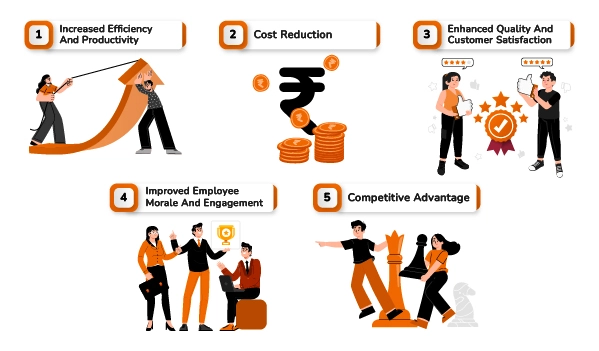
- Increased Efficiency and Productivity: By eliminating waste and streamlining processes, lean manufacturing enables organizations to maximize their resources, improve operational efficiency, and ultimately increase productivity.
- Cost Reduction: Lean manufacturing helps organizations identify and eliminate activities that do not add value, leading to reduced costs associated with wasted materials, excessive inventory, and inefficient processes.
- Enhanced Quality and Customer Satisfaction: By focusing on meeting customer needs and continuously improving processes, lean manufacturing ensures higher product quality, fewer defects, and increased customer satisfaction.
- Improved Employee Morale and Engagement: Lean manufacturing creates a culture of continuous improvement, empowering employees to identify and eliminate waste. This involvement and accountability foster a sense of ownership and pride, leading to increased employee morale and engagement.
- Competitive Advantage: Implementing lean manufacturing practices can provide organizations with a competitive edge in the market. With improved efficiency, reduced costs, and enhanced quality, companies can deliver products faster, at a lower cost, and with better value than their competitors.
Disadvantages of lean manufacturing:
- Implementing lean manufacturing requires significant planning, training, and organizational change, leading to initial implementation challenges such as employee buy-in, skill development, and resistance to change.
- Lean manufacturing relies heavily on supplier efficiency, and any disruption in the supply chain can adversely affect production and lead to delivery delays, causing harm to customer satisfaction and marketing problems.
- Implementing lean manufacturing is not a quick fix and can take time and effort, leading to temporary disruptions in productivity as work methods are changed.
- Lean manufacturing leaves little room for error, and in the event of equipment or labor failure, the entire operation can fall behind, potentially causing delays and disruptions.
Real-Life Examples of Lean Manufacturing:
- Toyota: The originator of the lean manufacturing concept, Toyota successfully implemented lean principles in its production processes. By eliminating waste and embracing continuous improvement, Toyota became one of the world's leading automakers, renowned for its efficiency, quality, and reliability.
- Nike: The global sportswear giant, Nike, implemented lean manufacturing principles to improve its supply chain and overall operations. By reducing lead times and optimizing its production processes, Nike achieved greater efficiency, reduced costs, and increased customer satisfaction.
- Amazon: The e-commerce giant, Amazon, utilizes lean manufacturing principles in its fulfillment centers to ensure efficient and timely delivery of customer orders. By constantly improving its processes, Amazon maximizes productivity, reduces costs, and provides a seamless shopping experience for its customers.
Conclusion
Lean manufacturing offers organizations a powerful framework to eliminate waste, optimize processes, and enhance overall performance. By embracing the key principles of value, value stream mapping, flow, pull-based systems, and continuous improvement, organizations can achieve increased efficiency, reduced costs, improved quality, and a competitive advantage in today's dynamic business environment. Learning from successful implementations such as Toyota, Nike, and Amazon can inspire businesses to embark on their lean manufacturing journey and unlock the potential for operational excellence.

